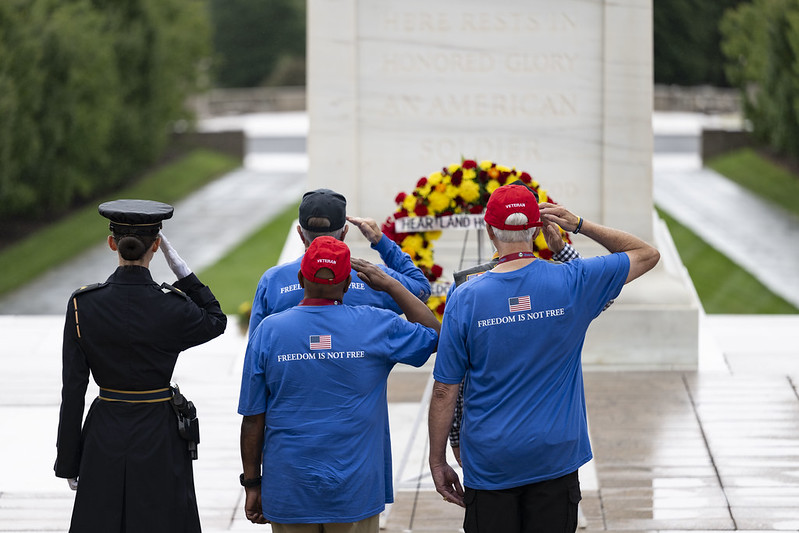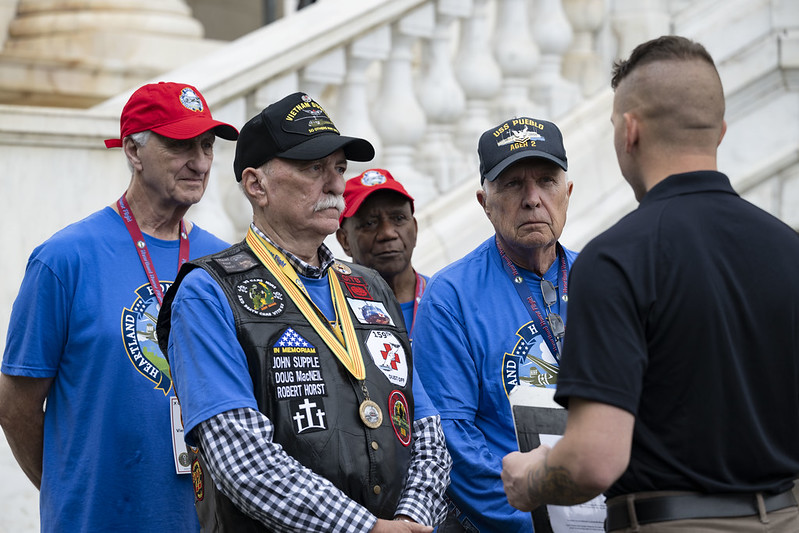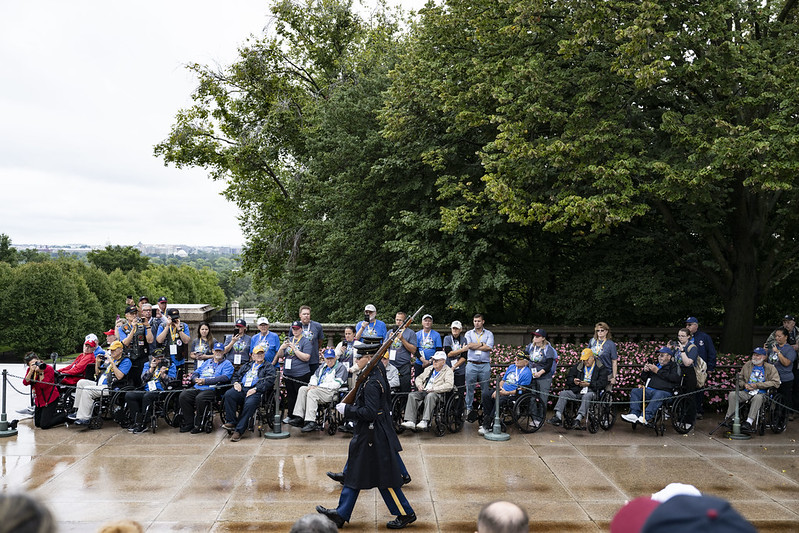
A special honor flight came to Arlington National Cemetery on Sept. 25, 2024. Typically, military veterans from a specific state or city comprise honor flights—gatherings to tour memorials in Washington, D.C., as well as Arlington National Cemetery. This honor flight, however, involved not only veterans from Kansas City, but also Vietnam War medevac crew members from all over the United States. On Sept. 17, 2024, Congress passed legislation to award these medevac crew members the Congressional Gold Medal. Commonly known by their call sign, “Dustoff,” they flew unarmed helicopters, adorned with a red cross, onto active battlefields to retrieve the wounded.
John Doole, the president of Heartland Honor Flight, noted that his organization usually accepts veterans only from the Kansas City area. In recognition of the Congressional Gold Medal legislation, however, “this time we did something special,” he said. According to Doole, the honor flight included 140 veterans.
Three Dustoff veterans and a veteran POW imprisoned in Korea in 1968 laid a wreath at the Tomb of the Unknown Soldier. Two of the wreath layers, Robert Allen and Randy Millican, may have met in Vietnam in March 1968. Millican had been a medic aboard a Dustoff that rescued wounded 25th Infantry Division soldiers from the Hobo (Hố Bò) Woods; Allen had been medevacked from the woods at the same time.
Allen, who had taken shrapnel in his back, remembered holding onto a handle in the helicopter with one hand and holding onto a fellow wounded soldier with the other as the helicopter took evasive maneuvers to dodge enemy fire. There is a chance that the two met. Both seem to remember Millican saying, “you’re gonna be okay, you’re going to live, I’m gonna work on your buddy for a little bit, so just hang on and don’t fall out.”
The third wreath layer, Darryl Duke, also served with the 25th Infantry Division in the Hobo Woods at the same time as Allen, though they never met while in Vietnam. The honor flight brought them together for the first time since the war.

The fourth wreath layer, Steven Woelk, had also been wounded in 1968, but his story was distinct. He served as a crewman on the ill-fated USS Pueblo, which was attacked by North Korean naval forces on Jan. 23, 1968, while in international waters off the coast of North Korea. Woelk had been burning classified documents when a 57mm round hit the side of the ship and exploded.
After the crew had been captured and imprisoned, doctors operated on Woelk without anesthesia. He spent 44 days in the hospital before joining his crewmates in captivity. “If they wanted something and we resisted, they beat us and took away food privileges,” he recalled.
After the four veterans laid their wreath, they saluted instead of placing their hands over their hearts as Taps played, a testament to their pride as veterans. Later, each reflected on what the wreath-laying meant to them. Woelk expressed humility, stating, “There are so many out there that are so deserving” of the honor to lay a wreath at the Tomb of the Unknown Soldier.” For Duke, it brought closure to his thoughts of all those who sacrificed their lives for their country; Allen thought of the soldiers he had fought with. Millican considered the wreath laying the highlight of his life. “I got weepy,” he admitted. “It makes you a better American to come here.”

► To learn more about Cold War military service, explore our education materials: https://education.arlingtoncemetery.mil/Themes/Cold-War.